|

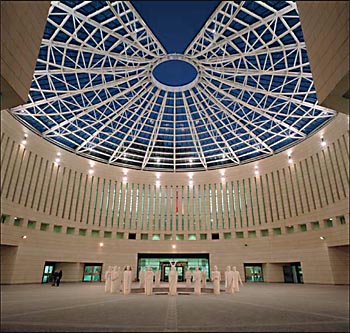
Mart, Rovereto
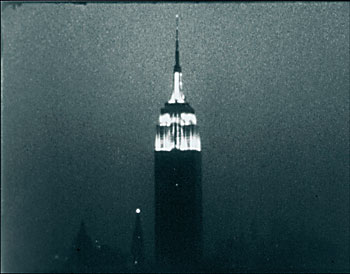
Andy Warhol
(American, 1928–1987)
Empire (excerpt), 1964
16mm film transferred to DVD.
Collection of The Andy Warhol
Museum, Pittsburgh
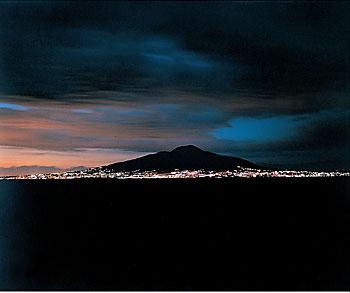
Piotr Uklanski
(Polish, b. 1968)
Untitled (Vesuvius), 2000
Chromogenic development
print under Plexiglas.
Collection Ernesto Esposito,
courtesy of Gavin Brown’s enterprise, New York














Gabriel Orozco
(Mexican, b. 1962)
Sandals Tale, 1996
Chromogenic development prints
Courtesy of Marian Goodman Gallery,
New York
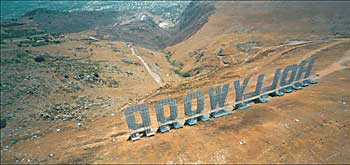
Maurizio Cattelan
(Italian, b. 1960)
Hollywood, 2001
Chromogenic development print,
Plexiglas, and wooden frame.
Courtesy of Marian Goodman Gallery,
New York

Alexander Timtschenko
(German, b. 1965)
Paris I, 1999
Chromogenic development print
Courtesy of Serge Hosseinzade Dolkani,
Munich
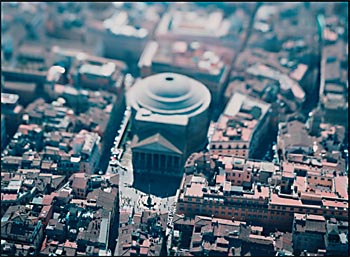
Olivo Barbieri
(Italian, b. 1954)
Site specific_roma 04, 2004
Video projection
Courtesy of Brancolini
Grimaldi Arte Contemporanea, Roma;
Spazio Erasmus Brera, Milano |
|
TOURISM AND ART
by Francesco Bonami
With
around 700 million people travelling towards international destinations,
tourism has become the most prosperous industry in the world.
In the “Universal Experience art and life”, the
tourist eye looks into the cultural implications of this peculiar
phenomenon through the works of 35 artists.
The exhibition started from the Museum of Contemporary Art of
Chicago, and after having been at the Haywood Gallery in London,
has finally arrived at Mart of Rovereto.
A dialogue between the known and the unknown opens up and enriches
our lives. In a world of media, full of mirages, tricks and
events similar to miracles, it is difficult to find true experiences
and unique places. Thanks to the means of communication we have
today, we are able to find ourselves in the exact same place
as the rest of the world and even see the same things, at the
same time. Universal Experience, though, wishes to be one of
those fairytale forests, where we can still find a place where
nobody else has ever been before. This discovery is, obviously,
a pure illusion and fiction; nevertheless these falsehood and
illusion can make our lives worth living.
The exhibition is a dialogue among present and future icons.
You ask yourself how a tourist attraction becomes a work of
art, like the Eiffel Tower for instance, and how a work of art
such as the Monna Lisa becomes a touristic attraction. We enter
a museum as tourists: facing the mystery of Art we transform
ourselves into spectators. As audience for icons such as the
Monna Lisa and the Nike of Samothrace we share universal experiences
and we become tourists and spectators, and viceversa over and
over again. The exhibition consists of a glass-system, in which
icons, spectators and tourists reflect their images into one
another. Why Universal Experience today? The modern world has
tried to convert everything – life, work, family, entertainment
– into entertainment business, celebrity industry and
mass culture.
Such a conversion wouldn't be possible, if most of what we regard
as being important for us today wasn't judged under those parameters:
tourism, entertainment business and the famous people industry
which have now become what is important in our society, ruled
by these brand new means of communication.
Nowadays, a work of art must become famous. Since fame is one
of the materials through which contemporary artists express
themselves, many works are considered famous even before having
actually been created.
Perhaps, contemporary art represents the climax of an authentic
experience, since we cannot really get to know it completely.
I believe art exhibitions are a failure when they worry wether
they would be understood or not, rather than being concerned
about the experience they offer. Depriving art of its spontaneity
means stealing from ourselves the opportunity of experimenting
a possible transformation within us as humans. Our culture,
unfortunately, tends to consider spectators as complete idiots,
trapped in a world of confusion, lacking desires, curiosity
and needs. When people ask me wether Universal Experience will
travel, I answer back “you'll be travelling”. I
do not want to create expectations. An exhibition like Universal
Experience is indeed an experience filtered through the eyes
of the visitors, that brings along questions without an answer,
keeping our doubts alive.
(excerpt from the essay in the exhibition brochure)
|





















